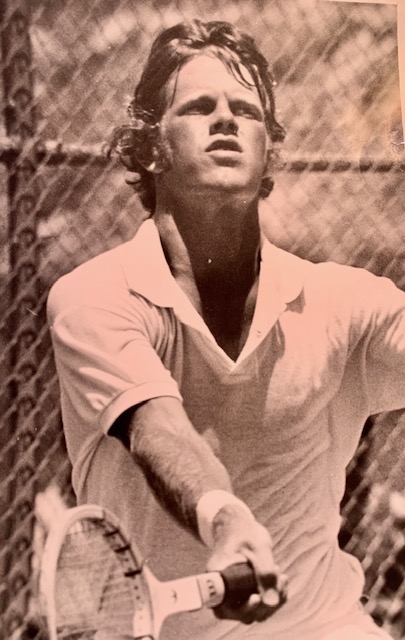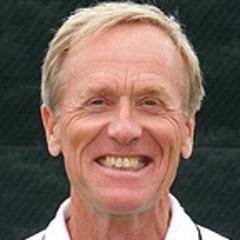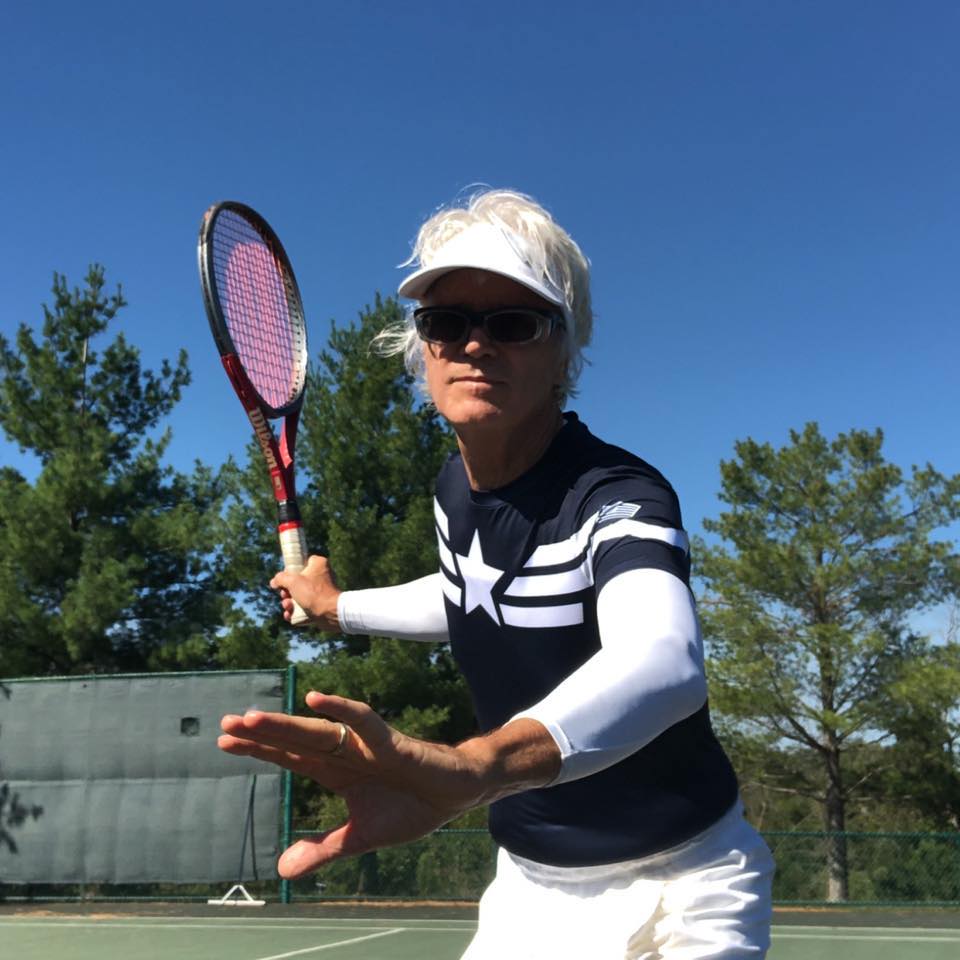Coaches
About our Pros
Every one quite a story
Click on each Coach’s name to see full bio
Steve Briggs
 Maharishi School Boys Tennis Coach — 2013-present
Maharishi School Boys Tennis Coach — 2013-present- Head Coach Vic Braden Tennis College, Germany
- Head of junior development Klipper Club, Hamburg, Germany
- Director of tennis Paradise Valley Country Club, Denver, Colorado
- Head pro South Park Tennis Club, Moline, Illinois
- Trained top 100 ATP tour players, European junior champion, 2 national champions, and numerous sectional ranked junior players
- 3-year varsity member of University of Arizona team
Photo from 1971 Omaha paper after winning Nebraska Open defeating Trey Waltke (career high ATP ranking — #41).
Lawrence Eyre

- Maharishi School Coach: Boys (1988-2012); Girls (1988-1994; 2017-present)
- USPTA Elite Professional (1992-2022)
- USPTA National High School Coach of the Year (2009)
- Grinnell College Assistant Men’s and Women’s Coach (2013-2015)
- Knox College Head Men’s and Women’s Coach (2015-2017)
- Intercollegiate Tennis Association Certified Umpire, Big Ten and Big 12 Conferences (1998-2021)
- Tennis Director, Camp Laurel South, Casco Maine (1994-99; 2005-2021 (see Camp Laurel Videos)
USTA article on Ukrainian Students
USTA Article on Growing the Game
Books:
Paul Stokstad

Paul Stokstad’s tennis journey started in 1962 when he started taking tennis seriously rather than planning a career in football. At the time, football had seemed more promising as a way forward, because his older brothers were championship level players and even his older sister had a bigger serve than he did.
The Stokstad family included Arden, who won the Iowa State High School singles tournament, played #1 for the University of Iowa, and who had many successes as an adult player in Iowa, later entering the Iowa Tennis Hall of Fame. Richard won the Missouri Valley Tournamant at age 13 and that year was seeded #8 in a national tournament. He also played for Iowa.
“Coach” Lloyd Stokstad was a highly successful Iowa Tennis coach with many Iowa Junior champion students. He is a founding member of the Iowa Tennis Hall of Fame. He coached high school and college tennis teams and served as the pro at Wakonda Club in Des Moines for many years, and also at the first indoor racket club in Iowa, also in Des Moines.
Growing up in a family of this nature put tennis center stage in many ways, but Paul did not have the successful junior tennis career enjoyed by his brothers. He played high school tennis, and went to a few juior tournaments, but most of his early years were spent helping his father teach tennis lessons, which often meant just picking up balls.
Even so, he absorbed a lot of instructional material, a sense of group class dynamics on court, and, over time, became what his father called “a student of the game.”
Tennis teaching has mostly been a part time activity for Paul, since his main career activities have been in other fields, but he did have several formal teaching engagements, including:
- Wakonda Club Assistant Pro, 1969
- Instructor, Vic Braden Tennis Academy, Cota de Caza, 1980
- Junior Tennis Instructor – MIU, 1983-85
- Summer Pro, Burlington Golf and Tennis Club, 1986-88
In 2003 he published the How to Be Your Own Best Tennis Pro book, which Amazon describes in this way:
“You’ve had what seems like a million tennis lessons, but you get out on the court and it all goes away. You revert back to old habits and what made sense in the clean green and white world of the tennis pro is lost out there on the gritty high school courts where you are losing again to Hacker Charlie. You get steamed, throw your racket and go home frustrated. This book addresses the problem of getting what you learn in lessons out onto the court where you are hitting the ball with an actual opponent. The book challenges you to take charge of your own growth as a tennis player. It presents a system of “point projects” to help you systematically gather tennis knowledge and effectively incorporate it into actual play situations. This system is applicable to tennis practice, practice matches, match warm-ups, and during competitive match play. The book includes a number of sample point projects on every major stroke for you to try, plus a goal-setting chapter to give you the beginnings of an overall plan for self-improvement built around your own list of point projects. For less than the cost of one tennis lesson, you can double the value of all your other lessons, and start to become your own (best) tennis pro.”
Famed pro Jack Kramer conributed this quote about the book:
“Paul Stokstad’s book puts the attention of the player where it belongs: on self-development. Only by taking a serious look at your own game, by pulling apart and examining the details of every stroke, can you put it all together again as a bigger and better game. The book has an interesting, systematic method of analysis that should take any player to a new level of understanding of their own game and of tennis in general.”
The book mirrors Paul’s own journey as a player, since he rarely had formal lessons, and most of his learning has been gathered from multiple sources and personal study.
Even though the book still has value, Paul’s perspectives on tennis underwent a fundamental change in the 1990’s due to interactions with Steve Yellin, creator of the Fluid Motion Factor and author of multiple books, including Simplicity, which focusses on the applications of Steve’s insights to golf.
Even though Steve is primarily known for his work with golfers, he is a devastatingly effective tennis player, with a long history of tennis successes, including a win over John McEnroe in an early stage of the latter’s career, and his Fluid Motion Factor concept is profoundly transformative for any sport.
Steve reoriented Paul’s tennis away from the analytical toward a more intuitive, spontaneous, in the moment style of play.
Paul continues both deep study of the evolving techiques of tennis (youtube is an ongoing asset), combined with careful observation, and yet, when he actually plays, aspires for more slience and less analysis.
His teaching emphasizes emerging discoveries of how to focus more effectively on the ball, and how to recruit the physiological core in transferring power into the ball.
All while enjoying the moment fully.
